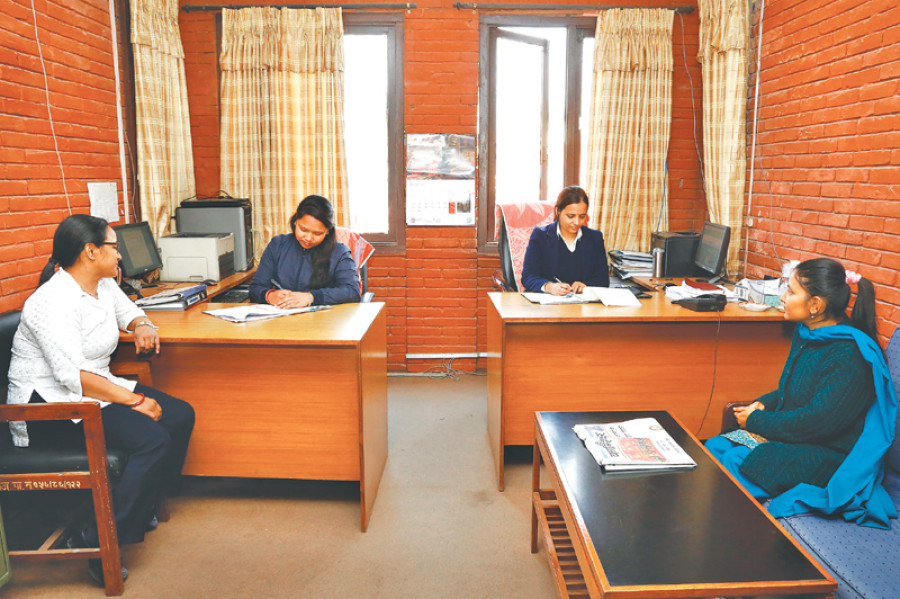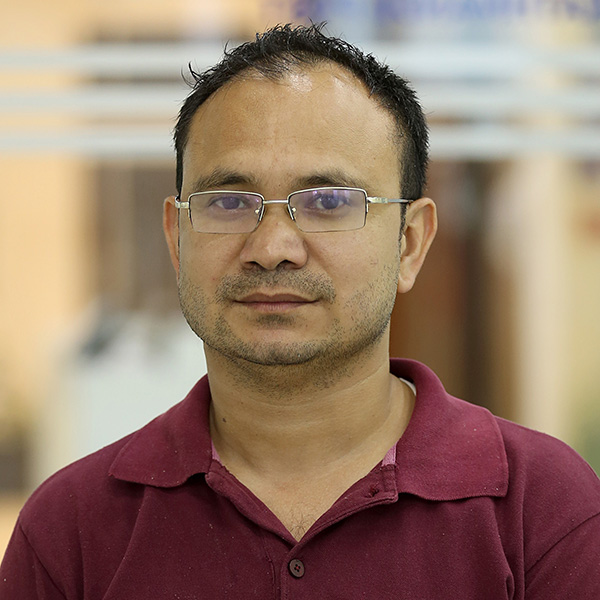Miscellaneous
Road to Inclusion
Nanumaya Pokharel, a non- gazetted fifth ranked officer at the Department of Civil Personnel Records, entered civil service five years ago when she was still pursuing her under-graduate study.
Prithvi Man Shrestha
Nanumaya Pokharel, a non- gazetted fifth ranked officer at the Department of Civil Personnel Records, entered civil service five years ago when she was still pursuing her under-graduate study. A young mother at the time, Pokharel had sat for both the free competition and inclusion categories for the Public Service Commission (PSC) exam, but eventually got enrolled under the latter.
Today, Pokharel represents thousands of Nepali women who’re increasingly looking for government jobs. “The charm of the government service lies in job security,” says Pokharel, speaking of the trend, “And I feel the provisions for women’s quota has played a role in boosting the confidence of all these aspiring women.”
The growing attraction of women towards civil service is also evident from the fact that women applicants outnumbered men in civil service examinations in the last two consecutive fiscal years.
According to the Annual Reports of the PSC civil service exams, women made up to 53.53 percent of applicants in 2015-16, and 60.12 percent in 2014-15. The number rose from 139,963 in the fiscal year 2009-10 to 318,503 in 2015-16.
“The amendment in the Civil Service Act welcoming more women in the arena has played an important role in increasing women participation in the civil service exams,” says Umesh Mainali, chairman of PSC.
The increase in women applicants can be traced back to the amendment of Civil Service Act-1993 in 2007, which reserved at least 45 percent of the civil service seats for women along with indigenous communities, Madhesi, Dalit, the differently abled and people from ‘backward areas’.
Assuming the 45 percent as 100 percent under the inclusion quota, the women are allocated 33 percent of seats within it. In addition, women can also qualify under the communities they belong to and contest in the open competition.
Besides the provision, family background has also played important role in prompting women, to join government jobs. Women who already have family members and relatives serving in the government offices are more likely to sit for the exams than those who don’t, says Yam Kumari Khatiwada, who has been recently appointed as Acting Secretary. Currently serving as regional administrator of Western Development Region, Khatiwada earlier served in the Ministry of Industry as its spokesperson.
Though women have started outnumbering the men in the PSC exams, the number of women entering the service continues to remain lower compared to men. In the last two consecutive fiscal years, where the number of women applicants outnumbered the men, the percentage of women who ended up joining civil service remained as low as 35 to 38 percent.
“It is not because women are not competitive but because they get only so much time to prepare for the exams, as they are oftentimes also occupied with household chores,” says Geeta Humagain, the information officer at the PSC.
However, women civil servants feel that the growth in their numbers is evident. “I see more and more women in Singh Durbar, the main administrative centre of the Nepal government,” says Pramila Devi Shakya Bajracharya, who heads the Technical Audit Department as joint-secretary at the National Vigilance Centre.
According to the latest data of the Department of Civil Personnel Records, 16,434 out of total 83,201 civil servants in the country are women, which make up around 20 percent of total civil servants. This is a significant jump compared to 14.67 percent recorded at the end of fiscal year 2011-12. According to Humagain, the percentage of women in the civil service was as low as nine percent in 2008.
Best vs worst
While observing the intake of women into civil service, the health sector boasts the best track record for inclusion at all levels, while the judicial sector shows the poorest results. Even when mostly found in the lower ranks, 8,688 out of 21,140 government employees in the health sector are women, making up to 41.1 percent of representation.
Humagain says that the representation in the health sector is specifically high because the positions such as staff nurses, auxiliary nurses, and midwives are completely occupied by women. On the other hand, in the judiciary sector, only five out of 290 judges are women, which amount to only 1.72 percent of total representation.
Kamal Shali Ghimire, secretary at the Ministry of Law and Justice, says that there is a shortage of human resources as whole and not just women in the judicial sector.
“One main reason is that while high school and intermediate-level students can easily contest for other services, it is not possible in case of judicial service. Certain level and kind of qualification is required to be eligible for judiciary service and it stands as a hindrance while hiring human resources,” he says.
Glass ceiling
Despite more women joining government jobs, Nepal is yet to get a female Chief Secretary—the top most position in civil service. Brinda Hada and Sudha Sharma are the only two women who have ever served as secretaries in ministries.
The government did promote Jeevan Prabha Lama as acting secretary once, but she retired without ever taking on the role of the secretary. “There is no provision of reservation for women in the highest positions, but there are also not enough women candidates with enough experience at the joint-secretary level either,” says Khatiwada, who landed her acting secretary post based on seniority.
However, Lama who has had the bitter experience of coming agonisingly close but never getting promoted to chief secretary feels that the lack of political connection compared to male counterparts might be a major reason why women are deprived of the promotion.
Keeping the dearth of women in top bureaucratic positions aside, efforts at inclusiveness is changing the civil service landscape. Rising number of women entrants and their likely promotion in the future to higher positions promises revolution in the current structure of the civil service.
For example, there were just 12 women joint secretaries in mid-July 2012 and the number has risen to 29 by the end of last fiscal year. At the under-secretary level, there were 151 women under secretaries at the end of last fiscal year compared to 99 at the end of fiscal 2011-12, according to Department of Civil Personnel Records.
If women occupying currently top government positions, including the Presidency, and the offices of the Chief Justice and the Speaker of the House, certainly flatter to deceive, a new wave of young enterprising women entering civil service is shifting the gender balance in government bureaucracy. The progress may be small, but in light of the country’s dismal history of inclusivity, it is a much welcome change.




 6.12°C Kathmandu
6.12°C Kathmandu












